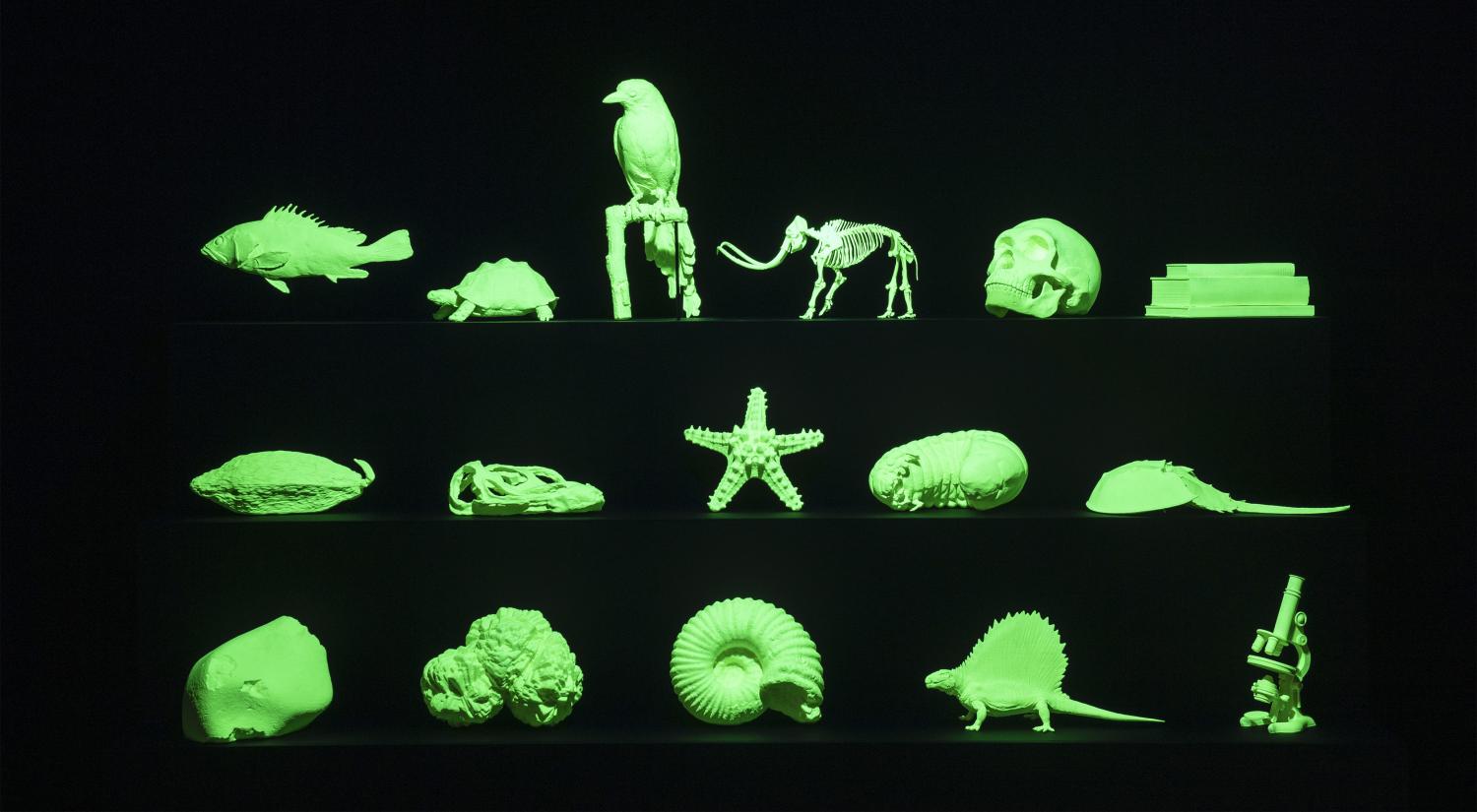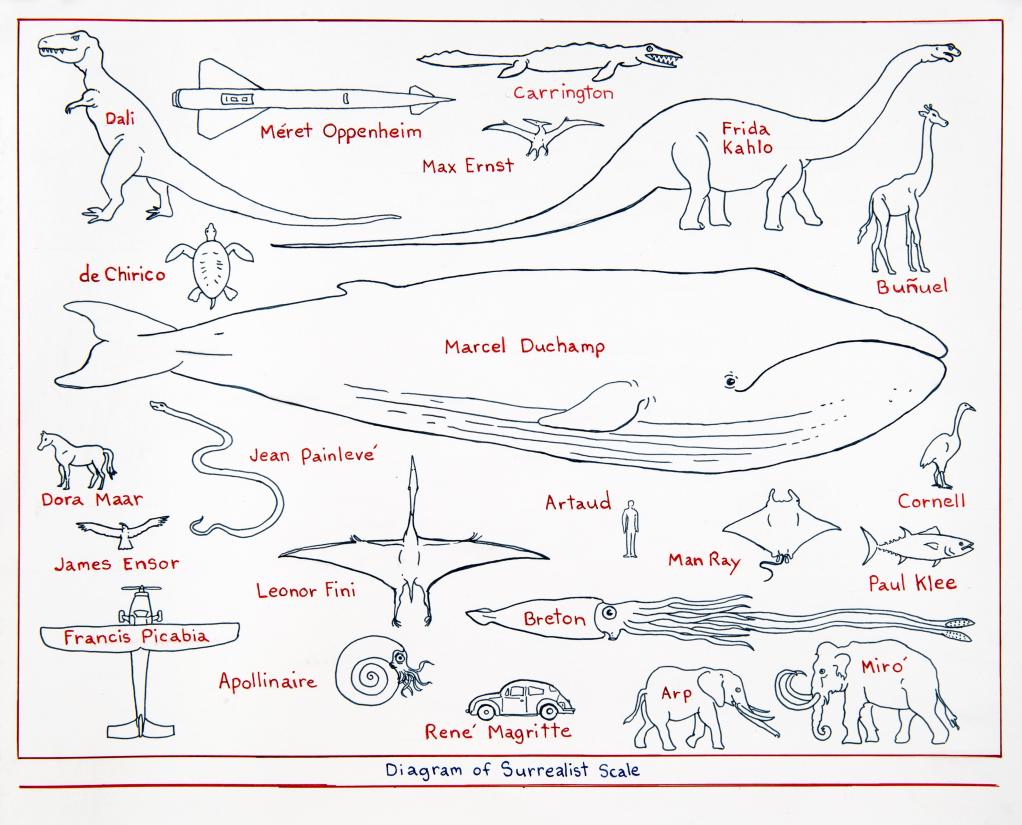Mark Dion’s The Natural Sciences and Diagram of Surrealist Scale are playfully surrealist. In a humorous tone they point to our constant urge to categorize and systematize.
Luminous wunderkammer
In The Natural Sciences we are presented with 16 3D-printed objects in the same fluorescent green, neatly organized into tidy rows. The collection is a mix of objects from flora and fauna as well as objects of a more material character: a tortoise, a microscope, a stack of books, a starfish, a bird – and more. Dion breaks with the notion of any natural hierarchy between the exhibits: in his glowing wunderkammer all things are treated as equals. The skeleton of a mammoth has the same size as a human skull. Dion draws on the wunderkammer as a format that is capable of establishing startling connections between the exhibited objects – and thus causing the viewer to wonder.
… a historical precursor of the museum
The wunderkammer, also known as the cabinet of curiosities, can be seen as a historical precursor of the museum: a collection of remarkable objects that were not categorized according to the disciplinary boundaries we rely on today. A microcosm that reflected the larger world outside through a collection of variegated objects. Dion uses the wunderkammer as a method to challenge taken-for-granted perceptions.
Diagram – now with humour
Dion again challenges with the notion of rational systematization in his drawing Diagram of Surrealist Scale. Here, extinct and contemporary animal species are juxtaposed with missiles and means of transport, each named after a well-known surrealist. Thus, Marcel Duchamp is a giant whale, Frida Kahlo a dinosaur, Méret Oppenheim a missile, and René Magritte an old VW bubble. The scale, too, is distorted. Dion enlarges in order to reinforce, diminishes in order to belittle and thus provokes reflections on what surrealists and scale actually have to do with one another in the first place. The diagram transcends any form of logic. The drawing’s use of red and blue pencil, commonly associated with accounting practices, adds a tongue-in-cheek comment about the market value of art.
About Mark Dion
Mark Dion (b. 1961, Massachusetts) is an American conceptual artist, who lives and works in New York. In his artistic practice he examines how museums, as public institutions, help shape our notions of knowledge, nature and history. He is known for experimenting with the cabinet of curiosities as an exhibition format and a comment on how we organize the phenomena that surround us. Dion’s work is represented in several leading museums, including MoMA in New York, Tate Gallery in London, Centre Pompidou in Paris and Seattle Art Museum.




